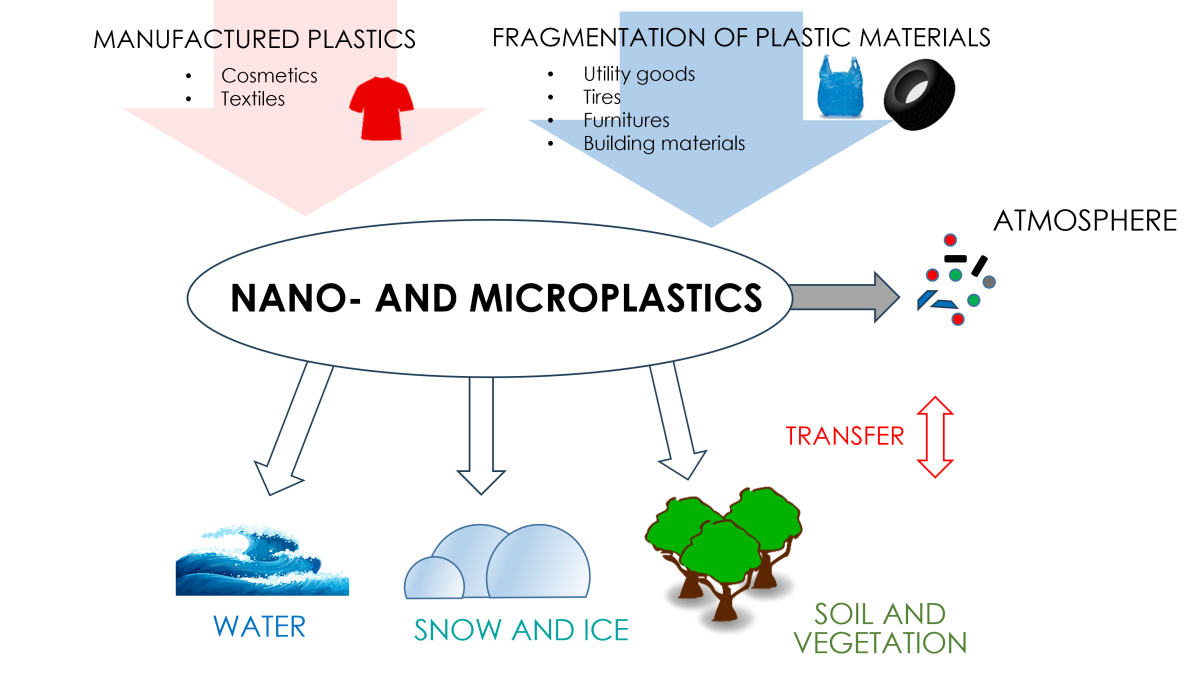ACINMUA – Abundance, characteristics and significance of nano- and microplastics in urban air
The aim of ACINMUA project is to develop sampling and analytical methods to the airborne plastic research and to explore the prevalence of nano- and microplastics in the atmosphere. This project will be conducted in collaboration between the researchers at Finnish Meteorological Institute (FMI) and Finnish Environment Institute (Syke).
Project description
ACINMUA (Abundance, characteristics and significance of nano- and microplastics in urban air) aims to identify nano- and microplastic particles in the air and resolve the distribution and main sources pf plastics in urban environments. ACINMUA has also the following objectives:
develop sampling and analytical methods to determine the chemical and physical properties of airborne nano- and microplastics
measure the contribution of atmospheric nano- and microplastics to urban PM and assess their significance for air quality in urban areas
evaluate the suitable metrics for nano- and microplastics (mass, number, surface or some other parameter) in order to address the air quality impact

This project combines the in-depth knowledge of atmospheric scientists related to particle sampling and online chemical analysis with the expertise of environmental scientists to analyze microplastics on various environmental matrices. Finnish Meteorological Institute (FMI) has decades of expertise on the sampling and chemical composition analysis of airborne particles whereas Finnish Environment Institute (Syke) has investigated microplastics in water and soil matrices for several years. The theme of ACINMUA is very topical as the problems with nano- and microplastic are in the media almost daily. Plastic particles have been found in many environmental matrices, i.e. water, soil and ice, as well as in living organisms including human bodies, however, the knowledge on airborne nano- and microplastics is still largely missing. The reason for that is that there have not been suitable sampling and analytical methods for nano- and microplastics in the air.
Publications
Scientific articles
1. Martinmäki, T., Saarikoski, S., Timonen, H., Niemi, J.V., Sillanpää, M. Plastic and rubber polymers in urban PM10 by pyrolysis–gas chromatography–mass spectrometry. Anal Bioanal Chem (2025). https://doi.org/10.1007/s00216-025-05906-z
Articles intended for professional communities
1. Saarikoski S., Sillanpää M. ja Timonen H. (2024) Mitkä ovat nano- ja mikromuovien vaikutukset ilmanlaatuun – lisää tutkimustietoa saadaan Suomen akatemian rahoittamalla hankkeella. Ilmansuojelu 2024/1, s. 4-7.
2. Sillanpää M., Martinmäki T., Timonen H. ja Saarikoski S. (2024) Hengitettäviä muovihiukkasia kaupunki-ilmassa? Ympäristö ja terveys –lehti 2024/6.
Conference proceedings
1. Sillanpää M., Martinmäki T., Timonen H. and Saarikoski S. (2024) Development of pyrolysis-GC-MS method for common plastics and tyre wear rubbers in urban PM10. European Aerosol Conference, Tampere, Finland, 25.-30.8.2024.
2. Sillanpää M., Martinmäki T., Timonen H. and Saarikoski S. (2024) Wet and dry deposition of airborne microplastics in urban background site in Helsinki. Plastic Pollution from Marco to Nano conference (MICRO2024), Lanzarote, Spain, 23.-27.9.2024.
3. Martinmäki T., Saarikoski S., Timonen H. and Sillanpää M. (2024) Mass concentrations of common microplastics and tire wear rubbers in urban air. Plastic Pollution from Marco to Nano conference (MICRO2024), Lanzarote, Spain, 23.-27.9.2024.
4. Sillanpää M., Martinmäki T., Timonen H. and Saarikoski S. (2025) Atmospheric deposition of airborne microplastics in urban background site in Helsinki. SETAC Europe 35th Annual Meeting, 11.-15.5.2025, Vienna, Austria.
5. Martinmäki T., Saarikoski S., Timonen H., Niemi J., Manninen H. and Sillanpää M. (2025) Seasonal Variation of Tire Wear Particles in Urban Particulate Matter. SETAC Europe 35th Annual Meeting, 11.-15.5.2025, Vienna, Austria.
6.6.2025
